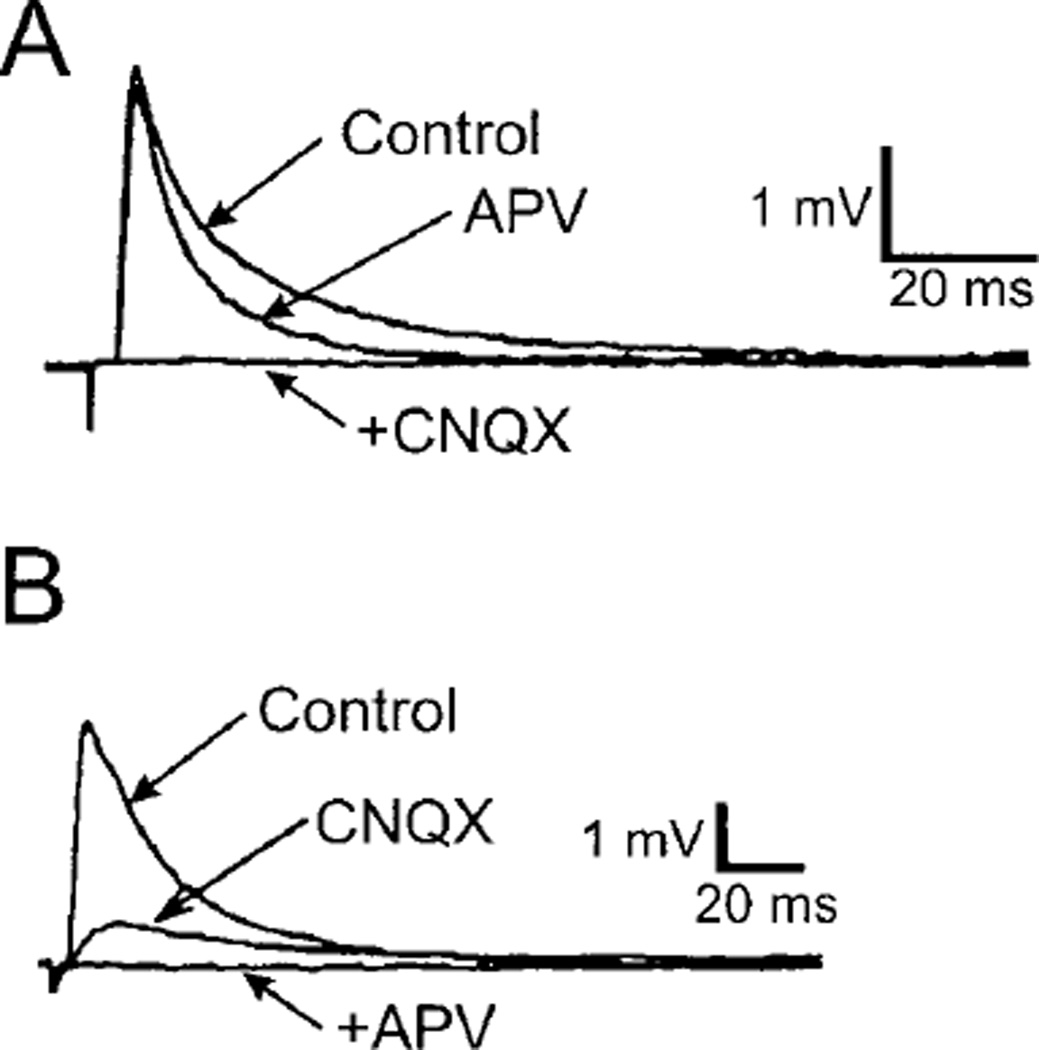FIG. 5.
dl-α-Amino-3-hydroxy-5-methylisoxazole-propionic acid (AMPA) and N-methyl-d-aspartate (NMDA) receptor components of monosynaptic EPSP, elicited by stimulation of dorsal root filaments, in a L5 motoneuron in a hemisected spinal cord from neonatal rat. A: EPSP are shortened by bath application of 20 µM dl-2-amino-5-phosphonovaleric acid (APV; an NMDA antagonist). The remaining fast rising EPSP is blocked by addition of 10 µM 6-cyano-7-nitroquinoxaline-2,3-dione (CNQX; a non-NMDA antagonist) to the bath. B: addition of CNQX (10 µM) to the bathing medium eliminates a predominant non-NMDA receptor-mediated component of the monosynaptic EPSP, revealing a slow-rising EPSP, which is blocked by 20 mM APV. Bathing media contained 1 mM mephenesin (to reduce polysynaptic transmission), 5 µM strychnine, and 10 µM bicuculline. [Adapted from Pinco and Lev-Tov (991).]

